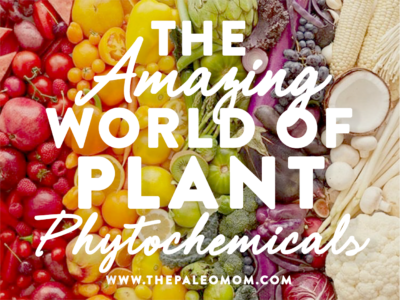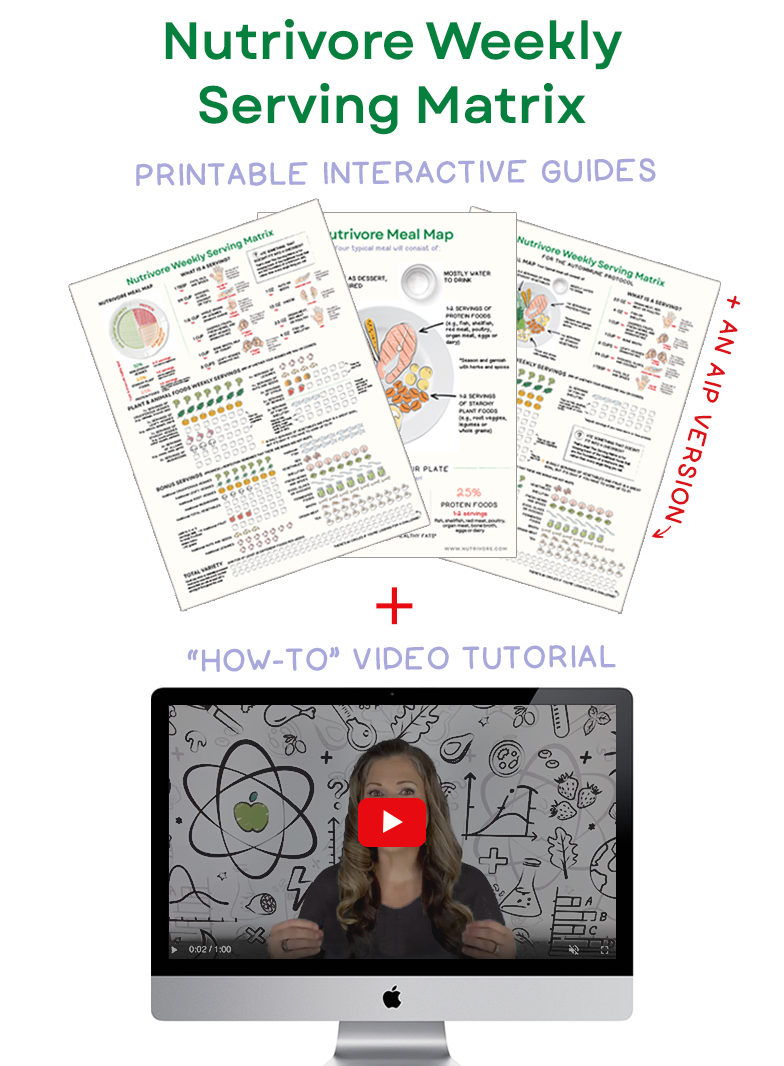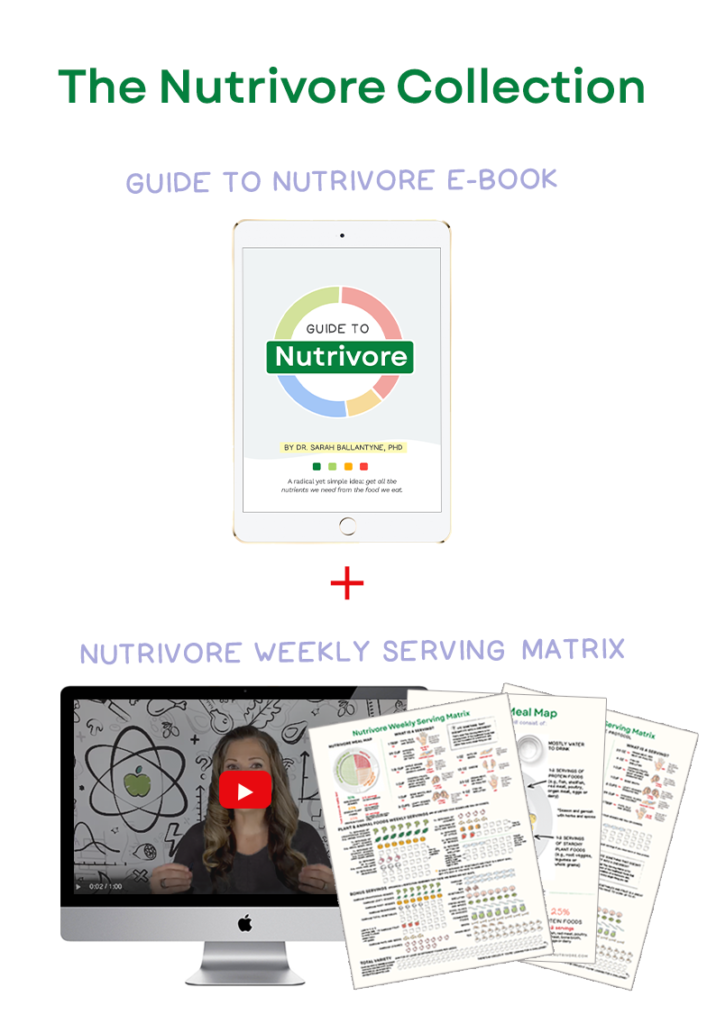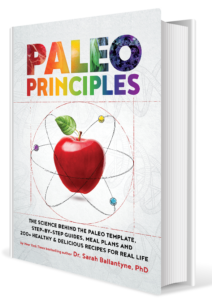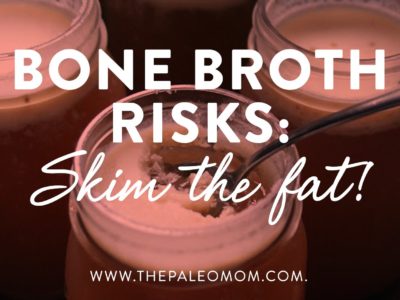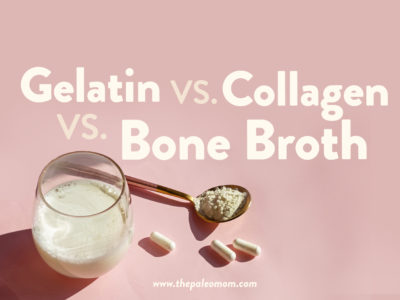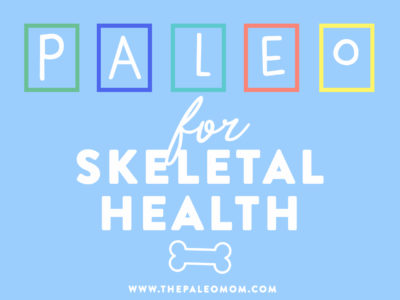It’s no secret that I’m a huge veggie fan! Their list of benefits includes everything from boosting immunity, to improving the health of our gut microbiome, to reducing the risk of every major chronic disease—all while supplying us with a wide spectrum of micronutrients. Not to mention, they make meals a lot more fun and tasty!
But, the argument occasionally comes up that plant foods are technically “unnecessary” because they don’t contain any essential nutrients that we can’t also get from animal sources. (Yep, even vitamin C is found in decent amounts in some organ meats, like adrenal gland.) Although I explained the rationale for humans being unequivocally omnivores in a recent series of posts (here, here, and here!), it’s a reasonable question to ask: What do plants provide that isn’t available from the animal kingdom? Why is eat our veggies so fundamental for our health?
A huge part of the answer can be summed up in one word: phytochemicals!
(Another huge part of the answer can be summed up with a different word: fiber. And, for more on that, see my Fiber Manifesto series, first post, second post, third post, fourth post, and fifth post.)
What Are Phytochemicals?
Phytochemicals are compounds in plants that, while not techinically considered essential (meaning you must consume them to stay alive), are absolutely vital for optimal health and disease prevention.
Phytochemicals are responsible for giving many fruits and vegetables their rich colors and unique scents, like the deep red of tomatoes or the aroma of garlic. They’re also a big reason why unprocessed plant foods (fruits and veggies in whole food form) are found to be disease-protective in study after study. Certain phytochemicals have the ability to slow the growth of cancer cells, help regulate hormones, prevent DNA damage, protect against oxidative stress, reduce inflammation, and induce apoptosis (death) in damaged cells (like a spring clean-up)—just to name a few of their beneficial activities.

Science has only scratched the surface of the 5,000+ phytochemicals in existence, but we know enough so far to say that many of these compounds are true rockstars! And, we have mounting research that a few classes of phytochemicals in particular play such a major role in human health that their dietary abundance is a necessary feature of any food plan designed to promote health.
Polyphenols
Polyphenols are a broad category of phytochemicals that represent the most abundant antioxidants in our diets. Because this class of compounds is so diverse, scientists sometimes divide polyphenols into two sub-categories: flavonoids and non-flavonoids (which both encompass even more sub-categories). Let’s take a closer look at both!
Flavonoids
Flavonoids are a diverse group of phytochemicals (including over 6,000 plant metabolites!) that may help reduce inflammation, exert antibacterial properties, and protect against heart disease and certain cancers. They include anthocyanidins, flavan-3-ols, flavanones, flavonols, and flavones. Although flavonoids have a range of different health effects, their benefits seem to be primarily due to helping regulate cell-signaling pathways (rather than by acting as antioxidants, which is a perk many phytochemicals offer).
Nutrivore Weekly Serving Matrix
An easy-to-use and flexible weekly checklist
to help you maximize nutrient-density.
The Weekly Serving Matrix is very helpful! I’ve been eating along these lines but this really helps me know where to focus vs. which foods serve a more secondary role. It’s super helpful and has taken a lot of worry out of my meal planning. Thanks!
Jan
Anthocyanidins: These flavonoids are why some fruits and vegetables have a beautiful blue, purple, or deep red color (think: grapes, red cabbage, cherries, eggplant, blueberries, cranberries, raspberries, and blackberries!). Anthocyanidins appear to have anti-inflammatory and neuroprotective effects, and may even have pain-relieving properties due to an affinity for certain “pain-sensation” cell membrane receptors in the brain.
Flavan-3-ols: Flavan-3-ols support normal blood flow by helping maintain the elasticity of blood vessels, while also reducing the risk of certain cancers and heart disease. Some research suggests they may also have antiviral and antimicrobial properties. These flavonoids are found mostly in dark-skinned fruits like black currants, grapes, cranberries, and elderberries.
Flavanones: Flavanones are a type of phytochemical found abundantly in citrus fruit, and while more research is needed to confirm their effects in humans, studies suggest they’re powerfully cardio-protective. These compounds have been shown to reduce inflammation, reduce hypertension, lower blood lipids, increase insulin sensitivity, and exert antioxidant properties—all of which translate to better protection for your heart!
Flavonols: Flavonols can offer major disease protection by potentially increasing plasma antioxidant capacity, decreasing lymphocyte (a type of white blood cell) DNA damage, increasing activity of an antioxidant enzyme called erythrocyte superoxide dismutase, and decreasing urinary markers of oxidative damage. Flavonols include the cancer- and cardio-protective phytochemicals kaempferol (which can interrupt the growth of a variety of cancer, reduce cardiovascular disease mortality, and protect against diabetes), myricetin (which can protect cells from carcinogenic mutations and protect neurons from oxidative stress, while also inhibiting the activity of some viruses), and quercetin (which may suppress inflammation in the brain). Rich sources of flavonols include onions, apples, chives, tomatoes, broccoli, cherries, kale, leeks, and pears.
Non-Flavonoids
Lignans: Lignans are found abundantly in flaxseed and sesame seeds, and in smaller amounts in broccoli, kale, apricots, cabbage, and Brussels sprouts. After you eat lignan precursors, your intestinal bacteria convert them into enterolignans called enterodiol and enterolactone, which can mimic some behaviors of estrogens. Although more research is needed to know for sure, enterolignans have the potential to protect against hormone-associated cancers (breast cancer, ovarian cancer, prostate cancer, and uterine cancer) by blocking the action of true estrogens.
Tannins: Tannins are astringent phytochemicals sometimes considered “antinutrients,” due to their ability to bind protein and iron. But, they actually offer a host of benefits for human health by serving as antioxidants, reducing blood pressure, improving blood lipids, and offering antimicrobial activity. Some tannins can benefit dental health by combating harmful oral bacteria and inhibiting plaque formation. Wine and tea are some of the best-known sources of tannins, but other items include pomegranates, berries, nuts, persimmons, legumes, and certain herbs and spices (cloves, cumin, vanilla, cinnamon, tarragon, and thyme).
 Yep, polyphenols are really great. A recent study showed that overall mortality was reduced by 30% in study participants who had rich-polyphenol diets (>650 mg/day) in comparison with the participants who had low-polyphenol intakes (<500 mg/day).
Yep, polyphenols are really great. A recent study showed that overall mortality was reduced by 30% in study participants who had rich-polyphenol diets (>650 mg/day) in comparison with the participants who had low-polyphenol intakes (<500 mg/day).
For reference, fruits and vegetables typically contain 200-300mg per 100g serving. A really high quality fresh-pressed olive oil may contain 300mg per quart. Dark chocolate contains a whopping 700-800mg per ounce! Typically, a glass of red wine or a cup of tea or coffee contains about 100mg polyphenols. Klio Tea herbal teas are all antioxidant-rich; for example their Greek Mountain Tea has 120mg polyphenols per cup while also being caffeine-free.
Chlorophyll
Chlorophyll traps light for photosynthesis, and is the pigment that gives plants their green color. But, this compound plays a beneficial role for humans, too! Chlorophyll is capable of binding to carcinogens (by forming tight molecular complexes) and inhibiting their absorption in your intestines, leading to lower levels reaching your tissues and causing harm. In fact, chlorophyll binds to some of the most widespread foodborne carcinogens, including polycyclic aromatic hydrocarbons (PAHs) and heterocyclic amines (HAs) (which can form when cooking meat at high temperatures), and aflatoxin-B1 (which can contaminate peanuts, corn, other cereal grains, pistachios, brazil nuts, dried spices, and dried fruit—especially when those items were grown and processed in warmer climates).
On top of that, chlorophyll can exert anti-cancer effects through another avenue, too: inhibiting cytochrome P450 (CYP450) enzymes, and increasing the activity of a phase II enzyme called quinone reductase. Enzymes in the CYP450 family are required to turn certain chemicals into active carcinogens, and when their enzymatic activity is reduced, those potential carcinogens don’t get converted into truly harmful metabolites. Likewise, phase II enzymes help your body eliminate carcinogens and other harmful substances, so ramping up their activity can also help fight the early phases of cancer.
Where can you find this fantastic phytochemical? Chlorophyll is rich in dark green leafy veggies, especially spinach, parsley, and arugula, as well as green beans and sugar snap peas. Any green veggie will have some though and even other color veggies do to, if they’re from a part of the plant that grows above ground!
Carotenoids
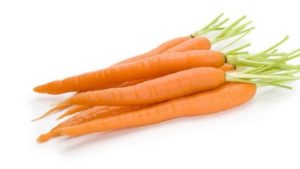 Carotenoids are a group of orange, yellow, and red pigments with potent antioxidant properties. Along with protecting against oxidative stress, carotenoids help facilitate communication between cells by promoting the synthesis of connexin proteins, which create gap junctions in cell membranes that allow small molecules to be exchanged (which is part of how cells “talk” to each other!). This may contribute to carotenoids’ cancer-protective properties, since gap junctional communication is reduced in tumors, and increasing it is associated with reduced tumor proliferation. On top of that, carotenoids appear to help protect LDL from oxidizing
Carotenoids are a group of orange, yellow, and red pigments with potent antioxidant properties. Along with protecting against oxidative stress, carotenoids help facilitate communication between cells by promoting the synthesis of connexin proteins, which create gap junctions in cell membranes that allow small molecules to be exchanged (which is part of how cells “talk” to each other!). This may contribute to carotenoids’ cancer-protective properties, since gap junctional communication is reduced in tumors, and increasing it is associated with reduced tumor proliferation. On top of that, carotenoids appear to help protect LDL from oxidizing
You might already be familiar with beta-carotene, but there are actually over 600 different carotenoids out there! The most extensively studied (and relevant to human health) include lycopene, beta-carotene, and lutein and zeaxanthin.
Lycopene: Lycopene is responsible for the red or pink hue seen in tomatoes, pink grapefruit, red peppers, apricots, papaya, peaches, and watermelon. It’s best known for supporting prostate health (and potentially reducing the risk of prostate cancer), but can also reduce the risk of other cancers, cardiovascular disease, diabetes, and osteoporosis.
Beta-carotene: Along with its provitamin A activity (meaning it can be converted into vitamin A by your body), beta-carotene is a strong immune enhancer that neutralizes free radicals and reduces the risk of some cancers and cardiovascular disease.
Lutein and Zeaxanthin: Lutein and zeaxanthin play major roles in maintaining eye health, due to their high concentration in the retina and their ability to filter harmful blue-light rays (in turn protecting critical parts of the eye from light-induced oxidative damage). As a result, these two phytochemicals can help in preventing and treating age-related macular degeneration, protecting against cataracts, and reducing the risk of retinitis pigmentosa. Lutein and zeaxanthin are rich in dark green leafy vegetables, citrus, and broccoli.
(By the way, all carotenoids are far more highly absorbed in the presence of fat (even just 3–5 grams of fat is enough to do the trick), so be sure to eat your carotenoid-rich foods with a little olive oil, butter, ghee, avocado, or other fat of choice!)
Isothiocyanates
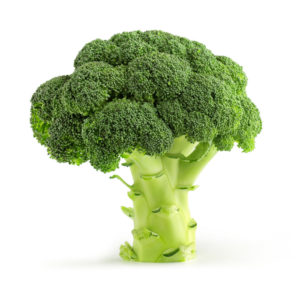 These sulfur-containing phytochemicals are formed from the breakdown of glucosinolates found in cruciferous vegetables (broccoli, cabbage, kale, Brussels sprouts, cauliflower, etc.), and are known for their anti-cancer properties (through enhancing tumor suppression and eliminating carcinogens from the body). Some types of isothiocyanates can up-regulate genes involved in protecting against DNA damage, inflammation, and oxidative stress, as well as increase the activity of phase II enzymes (such as quinone reductase and glutamate cysteine ligase) that help remove toxic substances and carcinogens from the body.
These sulfur-containing phytochemicals are formed from the breakdown of glucosinolates found in cruciferous vegetables (broccoli, cabbage, kale, Brussels sprouts, cauliflower, etc.), and are known for their anti-cancer properties (through enhancing tumor suppression and eliminating carcinogens from the body). Some types of isothiocyanates can up-regulate genes involved in protecting against DNA damage, inflammation, and oxidative stress, as well as increase the activity of phase II enzymes (such as quinone reductase and glutamate cysteine ligase) that help remove toxic substances and carcinogens from the body.
Organosulfur Compounds
Allium plants (including onions, garlic, chives, shallots, scallions, and leeks) contain a variety of disease-protective phytochemicals called organosulfur compounds, which include dithiolethiones, diallyl sulfide, and sulforaphane. Although these compounds are still being researched, we have strong evidence that they can help protect against stomach and colorectal cancers (due to inhibiting carcinogenesis in various parts of the digestive tract, including the forestomach, esophagus, and colon). Organosulfur compounds exert their effects by modulating important enzymes (the cytochrome P450 family and glutathione S-transferases) that help detoxify carcinogens and prevent DNA adducts from forming. One specific organosulfur compound, diallyl sulfide, also as potent antimicrobial properties and can help fight the stomach ulcer bacteria, H. pylori.
Plant Sterols and Stanols
Plant sterols and stanols (which are found in nuts, legumes, whole grains, and olive oil, as well as most fruits and vegetables) can help block absorption of cholesterol in the small intestine, due to having a similar chemical structure to animal cholesterol. As a result, these phytochemicals can help reduce high levels of LDL cholesterol in the blood (without impacting HDL levels) and potentially reduce the risk of heart disease.
The Whole Rainbow
Whew! That’s a pretty impressive array of benefits… and remember, it’s just a tiny sampling of the thousands of helpful phytochemicals out there! The compounds in plants are truly mind-blowing in both their sheer quantity and their value to human health.
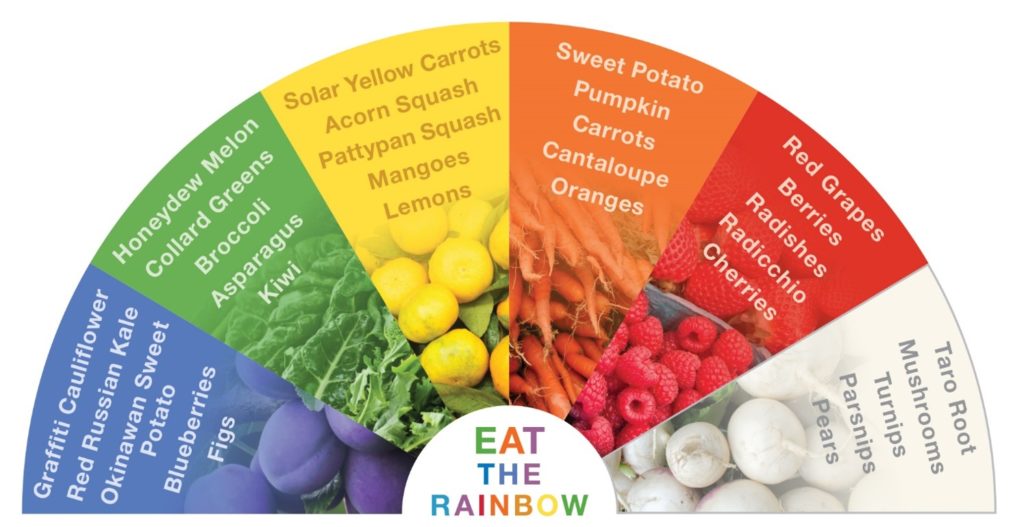 How many servings a day do we need? Science hasn’t established an RDA for phytochemicals, but studies show that 5 servings a day is the cusp for seeing decreased risk of disease, and the more the merrier. From a fiber, vitamin and mineral perspective, 8-10 servings a day of a variety of vegetables is a really good target. And, variety is definitely a key word there! To ensure you’re tapping into the phytochemical wealth of plant foods (not to mention fiber and other micronutrients), load up on a wide spectrum spanning the whole rainbow: deep blue and purple berries and vegetables; bright red and orange citrus, tomatoes, and peppers; vibrant green leafy vegetables and crucifers (broccoli, Brussels sprouts, etc.); garlic and onions and leeks—the list goes on and on. Because different plant foods contain different types of phytochemicals, your best bet is to aim for diversity as well as quantity.
How many servings a day do we need? Science hasn’t established an RDA for phytochemicals, but studies show that 5 servings a day is the cusp for seeing decreased risk of disease, and the more the merrier. From a fiber, vitamin and mineral perspective, 8-10 servings a day of a variety of vegetables is a really good target. And, variety is definitely a key word there! To ensure you’re tapping into the phytochemical wealth of plant foods (not to mention fiber and other micronutrients), load up on a wide spectrum spanning the whole rainbow: deep blue and purple berries and vegetables; bright red and orange citrus, tomatoes, and peppers; vibrant green leafy vegetables and crucifers (broccoli, Brussels sprouts, etc.); garlic and onions and leeks—the list goes on and on. Because different plant foods contain different types of phytochemicals, your best bet is to aim for diversity as well as quantity.
Enjoy the bounty of the plant kingdom, and reap the health rewards that come with it!
Citations
Aron PM & Kennedy JA. “Flavan-3-ols: nature, occurrence and biological activity.” Mol Nutr Food Res. 2008 Jan;52(1):79-104.
Bertram JS. “Carotenoids and gene regulation.” Nutr Rev. 1999;57(6):182-191.
Bianchini F & Vainio H. “Allium vegetables and organosulfur compounds: do they help prevent cancer?” Environ Health Perspect. 2001 Sep;109(9):893-902.
Breinholt V, et al. “Mechanisms of chlorophyllin anticarcinogenesis against aflatoxin B1: complex formation with the carcinogen.” Chem Res Toxicol. 1995;8(4):506-514.
Chanet A, et al. “Citrus flavanones: what is their role in cardiovascular protection?” J Agric Food Chem. 2012 Sep 12;60(36):8809-22.
Chung KT. “Tannins and human health: a review.” Crit Rev Food Sci Nutr. 1998 Aug;38(6):421-64.
Dashwood R, et al. “Study of the forces of stabilizing complexes between chlorophylls and heterocyclic amine mutagens.” Environ Mol Mutagen. 1996;27(3):211-218.
Dingley KH, et al. “Effect of dietary constituents with chemopreventive potential on adduct formation of a low dose of the heterocyclic amines PhIP and IQ and phase II hepatic enzymes.” Nutr Cancer. 2003;46(2):212-221.
Korte G, et al. “An examination of anthocyanins’ and anthocyanidins’ affinity for cannabinoid receptors.” J Med Food. 2009 Dec;12(6):1407-10.
Krinsky NI, et al. “Biologic mechanisms of the protective role of lutein and zeaxanthin in the eye.” Annu Rev Nutr. 2003;23:171-201.
Lampe JW & Peterson S. “Brassica, biotransformation and cancer risk: genetic polymorphisms alter the preventive effects of cruciferous vegetables.” J Nutr. 2002;132(10):2991-2994
Ma L & Lin XM. “Effects of lutein and zeaxanthin on aspects of eye health.” J Sci Food Agric. 2010 Jan 15;90(1):2-12.
Tachino N, et al. “Mechanisms of the in vitro antimutagenic action of chlorophyllin against benzo[a]pyrene: studies of enzyme inhibition, molecular complex formation and degradation of the ultimate carcinogen.” Mutat Res. 1994;308(2):191-203.
Tanaka T, et al. “Cancer chemoprevention by carotenoids.” Molecules. 2012 Mar 14;17(3):3202-42.
Ververidis F, et al. “Biotechnology of flavonoids and other phenylpropanoid-derived natural products. Part I: Chemical diversity, impacts on plant biology and human health.” Biotechnol J. 2007 Oct;2(10):1214-34.
Wang LQ. “Mammalian phytoestrogens: enterodiol and enterolactone.” J Chromatogr B Analyt Technol Biomed Life Sci. 2002;777(1-2):289-309.
Williamson G & Manach C. “Bioavailability and bioefficacy of polyphenols in humans. II. Review of 93 intervention studies.” Am J Clin Nutr 2005;81:243S-255S.
Yamaguti-Sasaki E, et al. “Antioxidant capacity and in vitro prevention of dental plaque formation by extracts and condensed tannins of Paullinia cupana.” Molecules. 2007 Aug 20;12(8):1950-63.
Yun CH, et al. “Non-specific inhibition of cytochrome P450 activities by chlorophyllin in human and rat liver microsomes.” Carcinogenesis. 1995;16(6):1437-1440.
Zamora Ros, R. et al. “High concentrations of a urinary biomarker of polyphenol intake are associated with decreased mortality in older adults”. Journal of Nutrition, June 2013. PMID: 23803472

